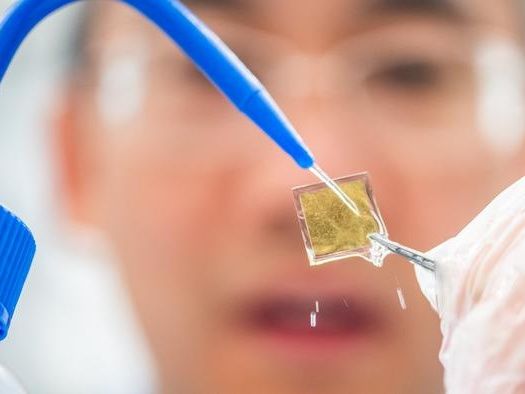Innovative Three-Layer Materials Boost Hydrogen Production Using Sunlight
Key Ideas
- Researchers at Linköping University in Sweden have developed new materials that enhance the efficiency of producing hydrogen from water using sunlight.
- The three-layer material, including cubic silicon carbide, cobalt oxide, and a catalyst, has shown eight times better performance than pure cubic silicon carbide in splitting water into hydrogen.
- Their aim is to achieve 10% efficiency to commercialize 'green' hydrogen production, significantly reducing the cost compared to current methods using supplementary renewable electricity.
- The long-term goal is to drive the photochemical reaction solely with solar energy, potentially revolutionizing the production of 'green' hydrogen in the next five to ten years.
Researchers at Linköping University in Sweden have made significant strides in the field of hydrogen production by developing innovative materials that enhance the efficiency of splitting water to produce hydrogen using sunlight. Led by associate professor Jianwu Sun, the research team has focused on creating a three-layer material composed of cubic silicon carbide, cobalt oxide, and a catalyst. This new material has demonstrated remarkable performance, being eight times more effective than pure cubic silicon carbide in the water-splitting process.
The researchers aim to achieve 10% efficiency in producing 'green' hydrogen, a form of hydrogen generated using renewable energy sources, particularly solar power. This goal, if reached, could revolutionize the production process and significantly reduce costs compared to current methods that rely on additional renewable electricity. The ultimate objective is to drive the photochemical reaction solely with solar energy, eliminating the need for supplementary power sources.
The study also addresses the importance of transitioning from 'grey' hydrogen, derived from fossil fuels like natural gas and contributing to carbon emissions, to 'green' hydrogen produced using sustainable energy. By harnessing the potential of sunlight and developing advanced materials, the researchers at Linköping University are paving the way for a cleaner and more efficient hydrogen economy. Their groundbreaking work may lead to a substantial environmental impact and accelerate the shift towards sustainable energy solutions in transportation and beyond.
Topics
Green Hydrogen
Renewable Energy
Climate Change
Research
Solar Power
Materials Science
Chemistry
Clean Transportation
Latest News
